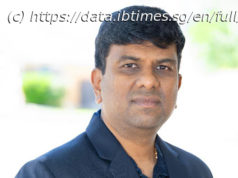Nicholas Shekerdemian has a pretty typical startup story: he dropped out of college, met up with a technical co-founder and then ended up starting a company…
Nicholas Shekerdemian has a pretty typical startup story: he dropped out of college, met up with a technical co-founder and then ended up starting a company. But Shekerdemian, who at the time was helping match English teachers with Chinese citizens, wanted to start a company that would solve his own problem: actually getting a job at a cookie cutter company where everyone else applies.
So he started a company called Headstart, which is geared toward fitting the right candidates with the right jobs — and cutting down on all that needless hold-ups that keeps the two from meeting. It’s a problem that both massive and smaller companies face, as bad hires can be extremely costly and a recruiters are typically working with very little information. Headstart works to discover candidate information and whether they have the technical expertise as well as a cultural fit with a company and then helps them connect. Headstart is launching out of Y Combinator’s Summer 2017 class.
“Companies still use basic criteria — qualifications, grades, University — and screen people out of the process, ” he said. “That’s not the things make up whether someone can do a job. That’s a part of the picture, not the whole picture. We wanted to create a platform where students could build a profile, have everything from interests, skills, personality assessments, resumé data, and everything that represented what you’ re like as a person. And we wanted to use that fingerprint to essentially match that to how suitable they’ d be from a value, cultural and technical perspective.”
Often times recruiters just have a CV and a resumé to work with. Job seekers apply to Headstart, filling out an application form that then gathers the kind of profile that offers more insight into a candidate for companies. Those companies then get those detailed profiles, offering an opportunity to get a better look at a (in theory smaller) set of candidates that are the best for the job.
At this point, we’ ve reached a moment where every startup is trying to say it’s an AI startup and sticks that into a slide into their pitch deck. But for Headstart, there are two parts of the problem that both require elements of machine learning. The information gathered from both large and smaller companies, Shekerdemian argues, transforms into a kind of defensible data set that — one which it’s been gathering for years — that can allow it to perform higher quality candidate matching.
For larger companies, Headstart has to parse through thousands (or tens of thousands) of employee surveys and data to figure out the parameters of a company’s culture and technical requirements. Each company is different, so Headstart has to run each set in a void to start off in order to establish a baseline understanding of the company. After that, it can start figuring out what candidates might fit into the company framework.
Given that this is such a big problem for companies, there will be a lot of approaches to it and a lot of competition. One example is Koru, which raised $8 million in 2015. That’s just to name one, but Shekerdemian said services like this tend to look at candidates in isolation from an assessment. Headstart is trying to constantly refine its algorithms to determine what candidates fit best as those needs at companies change over time, which Shekerdemian hopes will keep it ahead of its competitors.
“It’s the profiling we’ re doing and psychometrics we’ ve built in house and our own IP that allows us to collect data uniformly for machine learning, ” he said. “People who have been in the psychometric space wouldn’ t be able to do that because the data doesn’ t have the context. As we’ ve been growing, the time it takes to train those models after you’ ve collected the data is quite long. We’ ve been working on this for the last few years. Even that hasn’ t taken us to the point to where we want to be, but it’s going in the right direction.”






